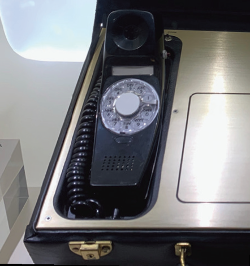TI introduction of their DLP 4k chip (shift 4k, not Native), Laser and LED light engines, at affordable prices, are the main reasons for expensive Native 4k high end projector sales struggle. Sure we would all love the image quality of the NX9, or even NX7. But Native 4k prices now start at 5k, and it's at $10K that their image quality is substantially better than an Epson 5050 or a lamp based DLP chip projector. Essentially for $2,500 street price you get 80% of the image quality of a $10,000 native 4k projector. Large 4k TVs (85") do make a dent in sells of all projectors, but not as much as you attest. The proof is Optoma's UST P1 projector selling like hot cakes. The combination of laser 4k UST, and affordable DLP chip projector are a greater threat to the slow demise of high end native 4k projector, than 85" 4k TV. Now, if by 2025 we have available 8k 100" TVs for $5,000, then that will bury all projectors.
But that is highly unlikely. 8k MicroLED TV's at 85-100" will end costing substantially over $5k.
Are the Days of High-End Video Projection Numbered?

The reason why the NX9 was chosen is that it notably pushed the high dynamic range performance envelope. JVC’s flagship did a good job displaying HDR right out of the gate, but a firmware update issued a few months after we reviewed it delivered a significant improvement on that front.
While the NX9 garnered S&V’s overall Top Pick for 2019, the year in general wasn’t so hot for projectors. No new D-ILA models were announced by JVC at the 2019 CEDIA Expo, and the same held true for Sony, which usually trots out new high-end LCOS models at that show. Clearly, high-end projectors are becoming increasingly thin on the ground.
Is this development surprising? Not really when you consider the state of The Big Picture. TVs with screen sizes greater than 70 inches are exploding in popularity. According to LG, the 70-inch-plus market will account for more than 10 percent of total TV sales by 2023. TV makers are also investing in MicroLED, a modular flat-panel tech that uses individual LED lamps for each pixel in the display and can be scaled up for massive screen sizes (as shown in the photo below). MicroLED delivers up to 16K resolution and brightness/contrast performance that projectors can’t touch.

It’s exciting to see how new technologies like MicroLED are pushing into the consumer space. Such displays are no longer just prototypes trotted out for trade shows; they are real products that can be purchased, installed in your home, and calibrated. Okay, I may be getting ahead of myself here — TVs in the 90-inches-and-above “cinema” size range remain pricey, and the current target market for MicroLED consists of sports stars and celebrities. In other words, projectors still provide the most affordable way to get a cinema-size image at home.
But it’s also clear that we won’t be seeing as many high-end projectors in the future as that category comes under pressure from the largest-size flat-panel sets and new display technologies. (It’s interesting to note that 85-inch LCD TVs can now be found for under $3,000, or the price of the Epson Home Cinema 5050UB projector that also won a 2019 Top Pick of the year award for the projector category.)
I’ve long been a fan of projectors — for me, that’s really the only satisfying way to watch movies at home — and have a keen appreciation for the bang-for-the-buck that projection tech provides. But it’s also hard to ignore the signs on the wall, and in this case that wall is a massive grid of pixels that may one day end up as your home’s main display.
Mobile Marvels
 On a recent visit to Samsung’s corporate headquarters near Seoul, South Korea, myself and group of reviewers and editors from the U.S. and Europe had the opportunity to visit the Samsung Innovation museum. Along with artifacts such as Leyden jars, Edison filament lamps, and a few early TV prototypes, the museum featured an extensive collection of early mobile phones like the Integrated Systems Technology TEL-COM 150A shown here. More than anything else, seeing these bulky, Bond-like contraptions made me appreciate just how far technology has advanced over the past few decades.
On a recent visit to Samsung’s corporate headquarters near Seoul, South Korea, myself and group of reviewers and editors from the U.S. and Europe had the opportunity to visit the Samsung Innovation museum. Along with artifacts such as Leyden jars, Edison filament lamps, and a few early TV prototypes, the museum featured an extensive collection of early mobile phones like the Integrated Systems Technology TEL-COM 150A shown here. More than anything else, seeing these bulky, Bond-like contraptions made me appreciate just how far technology has advanced over the past few decades.
Back in the early 1970s, a TEL-COM 150A in its leather attaché case would have set you back $3,500 (about twenty grand in today’s dollars) and all you could do with it was make calls. My iPhone Xs cost me $900 and I use it to make calls, take photos and videos, browse the web, make payments, stream music, control multiple devices in my home — and it fits neatly in my pocket. Impressive for sure, but one day that phone, too, will be a primitive-seeming specimen sitting in a museum.
Related:
- Log in or register to post comments


My local BB has had 4K 75 inch LGs on sale for weeks for like 700 bucks. 82 inch Sonys for 2K. If you sit back 10 feet from that, it still is going to fill your vision and you will never lust for 8K anything. Most people will have a spare bedroom around for that, many will not have enough dedicated home theater space like a lot of us here do. It is a great time to be in the hobby. Bring on a roll up 120 inch OLED for 5K and the game is over. Projectors will go down in flames. I see a day when even pro movie theaters use set screens, not projectors. The only thing that might put a kink in this idea is cheap and super clear virtual reality at a cheap price. That might surprise us all.

For me, it's the ability of a projector to show movies in their original format that keeps me using a projector. I've masked my screen so I can expand the sides to go from 16:9 TO 2.39:1 (or whatever the format) and show it full screen. I just tell the projector to go to the movie settings and it's just like being in a theater. No matter how large a 16:9 flat screen becomes, it would be the same.

Maybe cinema sized monitors will come down in price enough for average folks, but that won't remedy the ungodly amount of space a giant and ugly slab of black glass takes up in a room. I have an old 42" Sony HD monitor and I hate how much wall space it gobbles up when it's off. I can't image 90"! If I was some fat cat with a glut house and an extra room just for pretending I have a theater, a giant screen would be whatever. But most people's houses are compact and having a giant screen is both annoying and difficult to accommodate. A roll-down projector screen is the perfect compromise even if the quality and brightness is not equivalent.

The great advantage of a new 4k projector is that, unlike the current 4k or 8k TVs, these expensive and sophisticated TVs do not offer the necessary 3D feature for my more than 55 3D Blu-rays. Thankfully my fabulous Panasonic 65VT50b 3D TV works great. I wear prescription glasses but that doesn't stop me from watching my beautiful 3D movies, even if it is only occasionally. We welcome the next two AVATAR films in 3D, but I wonder if it is true that these films will be projected without the 3D glasses.
Excuse me. I posted this comment on the subject of cinema, now I'm posting on the right topic.






























































